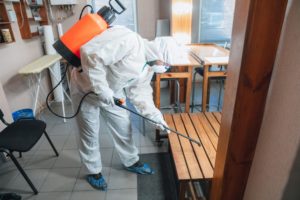Equine Insurance offers individuals a profound sense of security. Its primary function is to mitigate financial loss in the event of unforeseen accidents and calamities. It also offers businesses a safety net against liability claims.

An insurance policy is a contract between the insurer and the insured that guarantees coverage in exchange for regular payments called premiums. These fees can be paid on a monthly, quarterly, semiannual or annual basis.
Insurance is a form of risk transfer whereby an insurer promises to cover losses incurred by a policyholder, in exchange for a premium. It is a legal contract between the insured and the insurer, and it is important to understand how it works. In order to be effective, insurance must have a clear definition of terms, deductibles, and coverage. In addition, policyholders must carefully read and comply with all policy terms and conditions to avoid surprises.
Insurance policies generally fall under two categories: indemnity and liability. Indemnity insurance covers costs associated with certain types of misfortune, such as death or property damage, while liability policies cover damages that result from the actions of a policyholder. It is important to know the difference between these two kinds of insurance, because each type has its own unique features.
An insurance policy has several terms that must be clearly understood by the insured, including the declarations page, insuring agreement, and definitions. The declarations page identifies the insured, the insurance company, and the risks or property covered by the policy. It also lists limits, deductibles, and premiums. The insuring agreement specifies the amount that the insurance company will pay if the property is destroyed or damaged. It is important to understand the insuring agreement because it sets the limits on how much coverage a policyholder will receive if he or she makes a claim.
The policyholder is responsible for reporting claims, communicating with the insurance company, and addressing any disputes or concerns that may arise. In addition, he or she is responsible for reviewing the policy annually to ensure that it meets current needs and requirements. The policyholder is also responsible for presenting the insurance card at medical appointments and procedures to validate coverage.
In the United States, the federal government regulates the sale of insurance through an act known as the McCarran-Ferguson Act. This act allows the federal government to regulate insurance transactions that are deemed “commerce.” This includes a variety of activities, such as selling and servicing insurance contracts. In addition, the law prohibits the sale of nonadmitted insurance.
It is a form of investment
Insurance is a form of investment that safeguards your assets against the consequences of unforeseen events. It provides financial protection against financial loss by paying out a fixed sum of money in the event of death, health emergency, theft, or damage to property. The amount that you pay for your premium is paid into a pool, and when you need to claim, the insurer pays out from this fund. The way it functions makes insurance a cooperative scheme. The insurer would be unable to pay out from its own capital and needs to collect the money of many policyholders to cover large claims.
The insurance company invests this lump sum into a variety of investments, including money market instruments, which provide a steady source of income for the insurer. This helps them stay competitive and offer a high level of coverage for their customers. Some insurers also use these funds to finance their operations, reducing their need for borrowing.
Another benefit of insurance is that it can help you save on taxes. This is because the premium that you pay for your insurance policy is a tax-deductible expense under Section 80C and Section 80D of the Income Tax Act.
You can buy your insurance policy through a licensed agent or a broker, who may work with multiple companies and try to get you the best quote. In addition, there are online tools that can help you find the right insurance for you. They can even help you choose between life, auto, and home insurance policies, as well as the coverage amount that you need to protect your assets.
It is a safety net
Insurance is a form of risk management that helps individuals and businesses protect themselves against financial hardship due to unforeseen events. It can provide monetary support in the event of an accident, natural disaster, or health problems, and it provides peace of mind knowing that you’re covered. Without insurance, individuals would have to bear the entire burden of economic losses, which could lead to significant financial strain and difficulties in recovering from the situation.
The essence of insurance is the transfer of risk from the insured to the insurer by way of a regular premium payment. This is why it’s important to understand the terms and conditions of your policy before buying it. For example, make sure you check the dollar limits of coverage for specific items. This will ensure that you’re not overpaying for coverage.
Besides offering financial protection, insurance also plays an essential role in promoting long-term savings and investment opportunities. Life insurance policies like endowment, money-back, and Unit-Linked Insurance Plans (ULIPs) allow you to save in a disciplined manner and build wealth over the long term. This is vital for achieving goals like retirement and your children’s higher education, among others.
Insurers use actuarial analysis to assess the volume of risks, anticipate their various causes, and determine the premium amount to be collected. These calculations are based on a range of factors, including the number and types of policies in force, the probability of claims, and the expected loss ratio. Moreover, insurers use reinsurance to offset unexpected large losses. This helps balance their underwriting results and prevent peaks and troughs.
While nobody looks forward to losing something, losses happen and they can be financially devastating. The right insurance policy can help you bounce back from a financial crisis by providing the monetary means to cover your losses. It can even take away your financial worries, making your life easier.
When it comes to purchasing insurance, you’re not really buying an item—you’re purchasing a promise. Insurance is a legal contract between an insurance company and a policyholder, defining what will be covered and under what circumstances. It also outlines how much of the loss the insurer will pay. While most people will buy insurance to protect themselves against accidental or unfortunate incidents, it’s equally important for businesses to get the right coverage.
It offers individuals a sense of security
Insurance offers individuals a sense of security, which is an invaluable commodity in today’s uncertain times. Whether it’s for life, death, property or health, insurance is the safety net that you can depend on in times of need. The idea behind insurance is to pool the money of many people together, so that if something goes wrong, you can recover what you have lost or pay for certain services like healthcare without costing you a fortune.
The insurance industry plays a vital role in supporting the economy and providing financial security to individuals and businesses alike. It helps individuals and businesses feel confident in their abilities to navigate unforeseen events by providing them with a safety net of protection, which allows them to make smarter financial decisions. It also enables companies to invest in new technology and expand their operations, while reducing the risk of loss.
Most insurance policies cover a variety of circumstances, including accidents, health emergencies, theft and property damage. However, there are a few things you should keep in mind before purchasing an insurance policy. First, check the terms and conditions of the policy carefully. You should also consider the deductibles, copays, and premiums. The deductibles are the amount of money you have to pay before the insurer begins to reimburse you for your losses. It’s generally a good idea to choose a higher deductible, but be sure you can afford it.
In addition to offering financial protection, insurance can also help you build long-term savings by investing your premiums in market-linked funds. This will help you grow your wealth and achieve your life goals. For example, Unit Linked Insurance Plans (ULIPs) are a great way to save for the future by investing your premium in different mutual funds.
Lastly, insurance can help you eliminate dependencies in your family and maintain your standard of living in case of a disaster. For instance, if your breadwinner dies suddenly, a life insurance policy will help you provide for your family and keep them from financial hardship. It is also important to note that some government policies and regulations require you to carry insurance.








